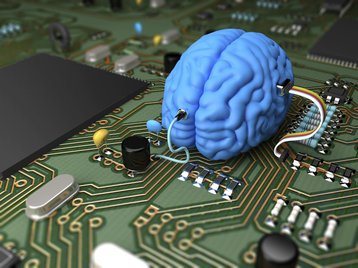The growth of data centers in this decade and beyond underscores an urgent need: data centers must do more with less - less space, less manpower, and less energy. But how to reach these goals while optimizing uptime remains elusive.
Last year, research by the Ponemon Institute revealed that the average cost of a single data center outage amounted to a staggering $730,000. No less troublesome was data center energy consumption, which rose to three percent of the world’s electricity supply. While there’s considerable kvetching over these troubling stats, many CIOs are taking a hard look at uniting DCIM with Artificial Intelligence (AI) and robotics to ensure data centers remain efficient and secure.
AI meets DCIM
Dovetailing AI with Data Center Infrastructure Management (DCIM) software shows exceptional promise in analyzing power, cooling, and capacity planning, including the ability to monitor the status of critical backend systems. Case in point: Google leveraged DeepMind’s AI engine to automatically flag power inefficiencies across 120 data center variables, including fans, cooling systems, and windows.
A system of neural networks trained on various operating factors and metrics in Google data centers resulted in a more efficient and flexible structure to adapt to the center’s workflow. Google-DeepMind researchers drew historical data from sensors to compile specifics on power, temperatures, pump speeds, setpoints, and more to formulate an efficient operating profile.
As a result, data center power consumption was cut by 15 percent and power for cooling by 40 percent, saving Google hundreds of millions of dollars.
AI and robotics
Uniting AI with robotics, data centers can now make physical alterations to a network. Robots can be deployed to perform physical network connections throughout a network’s infrastructure and enhance its response to security threats.
The result is a simpler, more responsive infrastructure, one that assuages security concerns, accelerates reaction times, and cuts operating costs. Robotically enhanced AI can also help IT staff rapidly locate and isolate security threats by remotely severing connections to other systems. Should a threat be imminent, an IT tech could manage dozens of fiber connections with a simple mouse click.
The ability to physically connect/disconnect network connection with speed enhances both security and manageability. IT staff can finally spend their valuable time on more important business endeavors. Automating data centers means CIOs can achieve increased productivity and an environment that reflects automation at its most efficient.
Deploying the AI genie
Let’s face it, IT administrators and managers can barely keep up with the increasing demands of managing today’s data centers. Unleashing the power of AI and robotics together with DCIM tools allows connections to be switched within a network based on real-time traffic. Network techs no longer need to monitor and direct these procedures manually. AI finally allows operators to maximize data-based operations, alter workflows, and protract the physical infrastructure of their facility.
Uniting AI with robotics allows security threats to be quickly mitigated. Physical connections can be adjusted automatically within the network, reducing a threat’s ability to metastasize.
DCIM force multipliers
AI and robotics can be viewed as DCIM force multipliers, giving engineers and administrators a holistic view of a data center’s overall efficiency. The power of AI can automatically reveal just how energy, equipment, and floor space are being used. In large data centers that chew up megawatts of electricity,
DCIM tools and smart devices can now be leveraged by AI to provide key insights into a center’s power and thermal management, as well as its security profile. Robotics can automate critical functions, including upgrades and maintenance, giving data centers the ability to be more efficient and responsive to new architectures and security threats.
Rajan Sodhi is chief marketing officer at Tuangru


